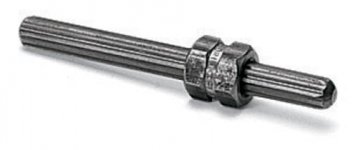gregormarwick
Diamond
- Joined
- Feb 7, 2007
- Location
- Aberdeen, UK
They screwed in a stud in order to suspend it in the tank. One of six parts, value is ~£6k each, the other five are fine, unplated in the one same hole so they clearly used the same method on all six.
The part is fully plated so presumably they sheared it off during removal rather than insertion. It's sheared off cleanly about 1mm under the surface.
Sheared off during removal means it's well stuck.
Hole is tapped M5 helicoil. No idea if they used an appropriately threaded stud, but the others are not obviously messed up so I assume it is.
32µin RMS surface requirement on the face around the holes, so wary of mechanical means of extraction.
Anodise is type 3 class 2 hard, as per MIL-A-8625, black dye, dichromate seal.
I don't have any edm, and am reluctant to push this part out to any of our nearby places that do...
Is there any chemical method that will not affect the anodise?
TIA for suggestions...
The part is fully plated so presumably they sheared it off during removal rather than insertion. It's sheared off cleanly about 1mm under the surface.
Sheared off during removal means it's well stuck.
Hole is tapped M5 helicoil. No idea if they used an appropriately threaded stud, but the others are not obviously messed up so I assume it is.
32µin RMS surface requirement on the face around the holes, so wary of mechanical means of extraction.
Anodise is type 3 class 2 hard, as per MIL-A-8625, black dye, dichromate seal.
I don't have any edm, and am reluctant to push this part out to any of our nearby places that do...
Is there any chemical method that will not affect the anodise?
TIA for suggestions...


